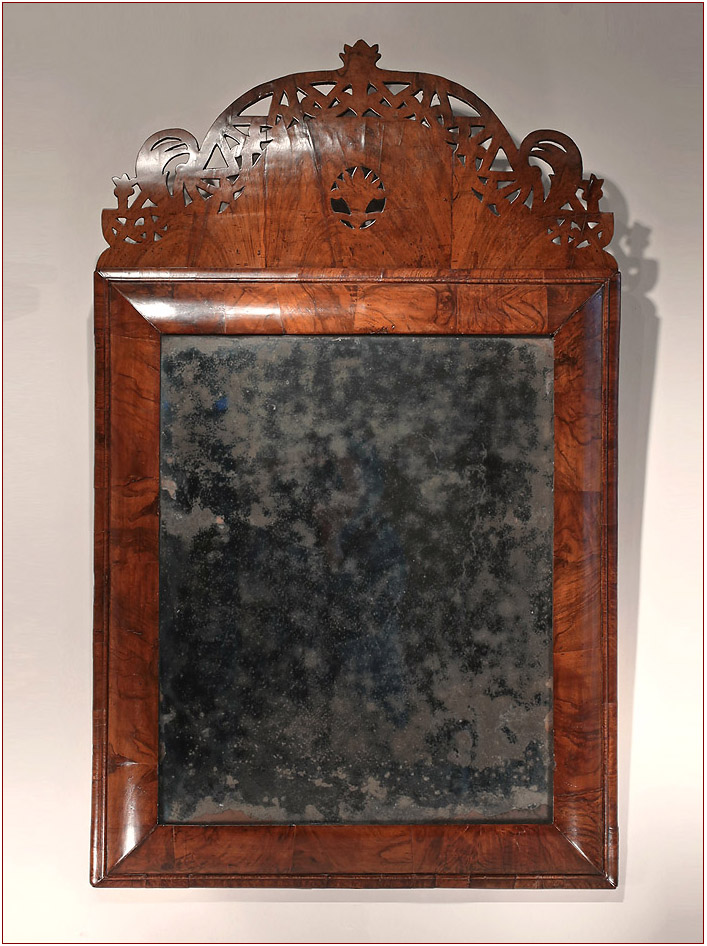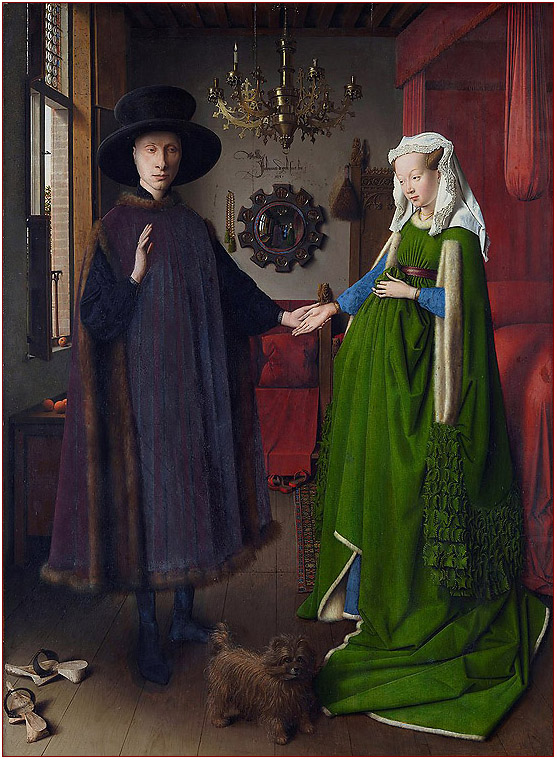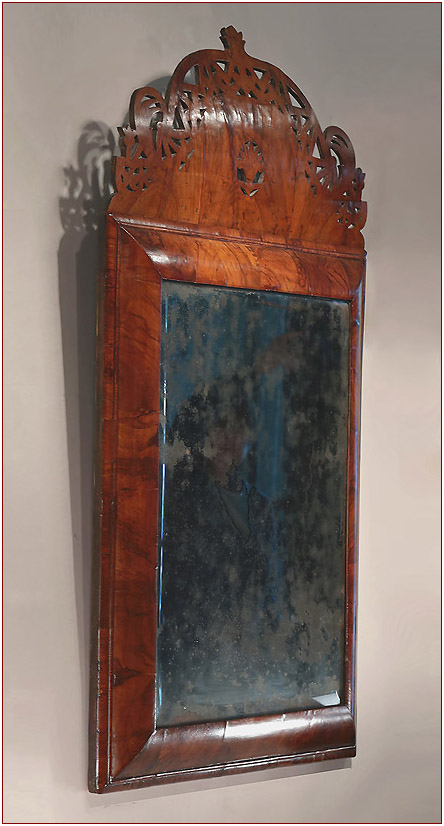|

"The well figured walnut wall mirror retaining the
original rectangular shallow-beveled Vauxhall* glass plate
within in a cushion-moulded surround with sectionally-veneered cross-grain moulding
surmounted by the original tenoned arched and pierced crest,
the cut-out floral and foliate designs creating contrasting light and dark areas;
43" High
This mirror is also of quite large size - a rare combination to find in today's market.
"The Glass" :
1690 is really quite early in British "looking glass" plate-making.
The making of glass, as well as polished metal mirrors, dates back thousands of years.
However, the same history is not true for
glass mirror plates.
Venice glass-making factories have existed since the 8th century - but more for tableware,
their small mirrors being produced from c1500 forward.
In England, little is known about glass and glass-making until 1600.
"Mirrors" from known 16th century inventories (as Henry VIII) proved to be of polished metal.
Oddly, even the convex mirror in Jan Van Eyck's well known 1434
"Portrait of Giovanni Arnolfini and His Wife"
is now speculated as possibly of polished "steale" rather than glass ("christal") -
in part due to its "large size" - and estimated extraordinary expense

England's first coal-fired factories were founded in 1610 -
intended primarily for window glass.
But the newly coveted "looking glasses" were quick to follow,
being perfected and supplied by 1620.
The 1666 Great Fire of London prompted further expansion of the glass industry,
especially for replacement of window glasses.
And in 1677, the Duke of Buckingham brought experienced Venetian workmen
to Lambeth, London, just north of Vauxhall Gardens -
* the name "Vauxhall glass" now being used to describe the soft gray shallow-beveled
British glass of the late 17th and early 18th centuries.
According to diarist John Evelyn, 1620-1706,
the Vauxhall area's late 17th century glass was really quite exceptional :
"they make huge vases of metal (glass), as clear, thick and ponderous as crystal,
also looking-glasses far finer and larger than any that came from Venice".
The Vauxhall plate on this William & Mary mirror came only shortly thereafter :

& "The Reflection" :
For "looking-glass" reflectance, these glass plates were covered with mercury backing -
a long laborious process.**
(Please see "footnotes" for a 1699 contemporary description)
|